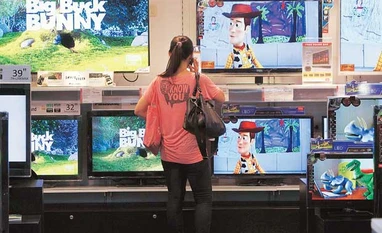The domestic media and entertainment (M&E) sector has seen significant shifts in the past month as the coronavirus disease (COVID-19) outbreak has forced people to stay indoors.
While news channels, gaming apps, movies and children’s content have gained since lockdowns began on March 16, segments such as radio, out-of-home, print and multiplexes have suffered, according to consultancies such as EY and the Broadcast Audience Research Council (BARC).
EY estimates that a month-long lockdown will result in flat growth for this calendar year versus a forecast of 8 per cent growth made by the consultancy before the outbreak. Its M&E report, released on Friday along with the Federation of India Chambers of Commerce and Industry, has pegged the overall market size at Rs 1.96 trillion for 2020, which it said was undertaken before the outbreak. The 2019 M&E market size was Rs 1.82 trillion.
The scenario, said Ashish Pherwani, M&E sector leader, EY India, could get worse if the lockdown extends for two months, with overall growth declining by 10-12 per cent and the fall being sharper at 20-25 per cent if it extends to three months.
“These are unpredictable times and the full impact will be clear as we go forward,” Pherwani said. “But digital viewership has a bright future and broadcasters will adjust to the new normal in the months ahead. They are already repackaging nostalgic content as fresh content dies out (on TV) and repurposing over-the-top content for TV,” he said.
BARC data, also released Friday, shows a 6 per cent increase in television reach between March 14 and 20, when a phased lockdown began compared to the preceding weeks.
Also, average daily viewers grew by 32 million between March 14-20 versus the weeks before the lockdown, and viewers spent 3 hours and 51 minutes per day in the week watching TV, said BARC, led by movies, children’s programmes and news segments. BARC said digital consumption, too, grew sharply with news apps seeing 8 per cent more viewers and an increase of 17 per cent in time spent per user. Gaming apps saw an increase of 2 per cent in users during the week under review, with an 11 per cent increase in time spent per user.
Industry experts said the trend of growing television viewership would continue in the medium term. “Overall, general entertainment channels (GECs) have seen some impact in terms of viewership as no fresh content is being produced, but once the crisis is over, the dedicated audience would return to GECs, and so would advertisers,” said a senior official of a media company.
As such, niche channels such as Sab TV (comedy), NDTV Goodtimes (travel and lifestyle), food and infotainment channels (such as Food Food, Fox Life, Sony BBC Earth) have traditionally thrived on repeat telecasts of popular shows, said experts.
BARC also says that people are spending more time chatting and networking on social media platforms, growing 23-25 per cent between March 14 and 20 versus earlier. Almost all social networking apps, said BARC saw significant increase not only in time spent per user in the week under review, but also in the sessions per user. Shopping, travel, and food apps, by contrast, saw a huge drop in both users per week and time spent per user.
Analysts say multiplexes are staring at dark times. ICICI Securities said that it expected the lockdown to continue till May and multiplexes’ operations to resume only from June.
“Our interaction with managements and disclosures made by them reveal that multiplexes are going to invoke the force majeure clause to shield themselves from critical costs of rentals (that form 44-45 per cent of fixed costs), while closure of malls and multiplexes will also mean savings on other fixed costs such as manpower, maintenance and power,” the brokerage said.
Pherwani says digital releases of films will grow, especially by small producers, though large production houses will continue to count on theatrical releases for business.
Unlock 30+ premium stories daily hand-picked by our editors, across devices on browser and app.
Pick your 5 favourite companies, get a daily email with all news updates on them.
Full access to our intuitive epaper - clip, save, share articles from any device; newspaper archives from 2006.
Preferential invites to Business Standard events.
Curated newsletters on markets, personal finance, policy & politics, start-ups, technology, and more.
)